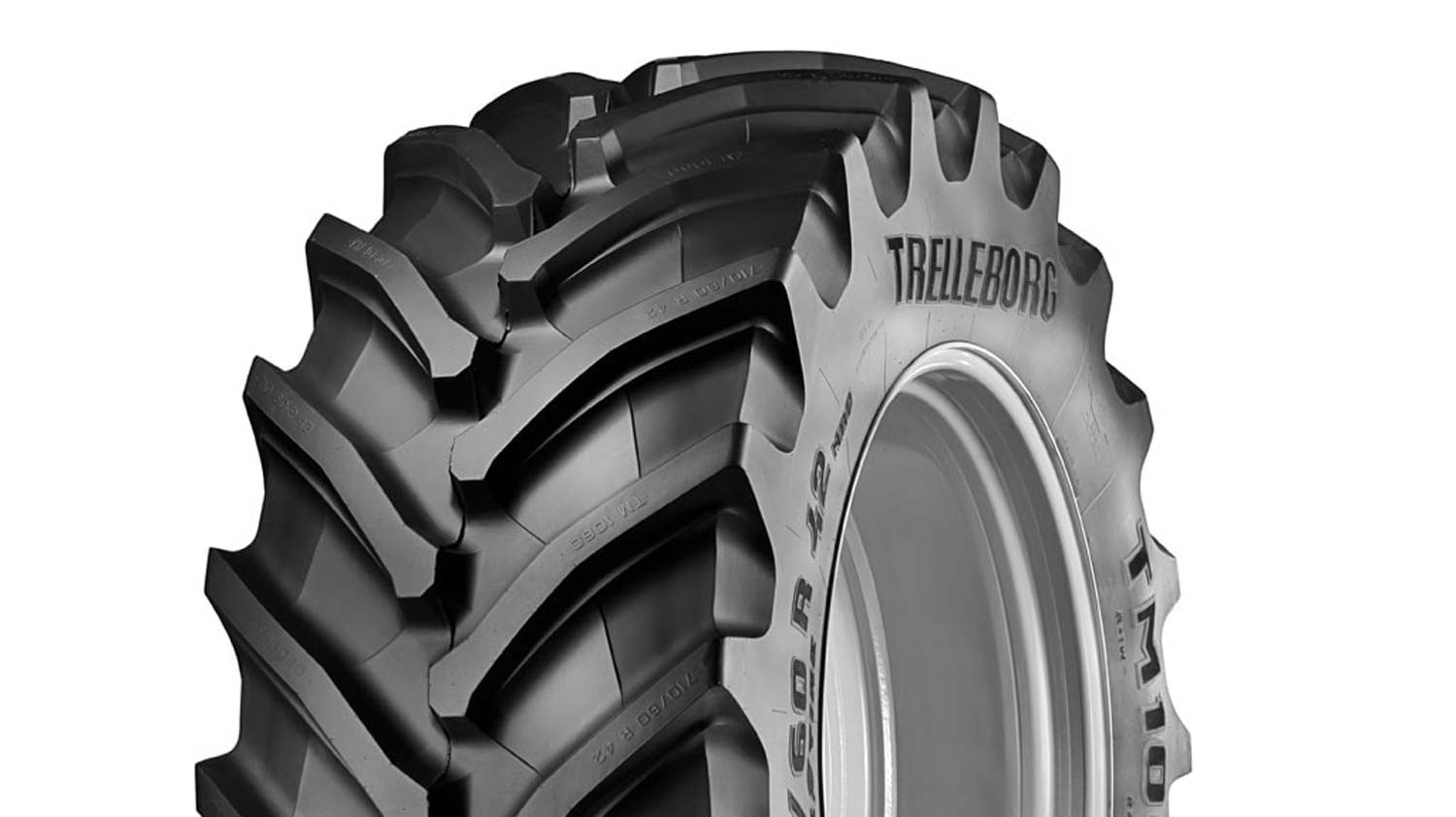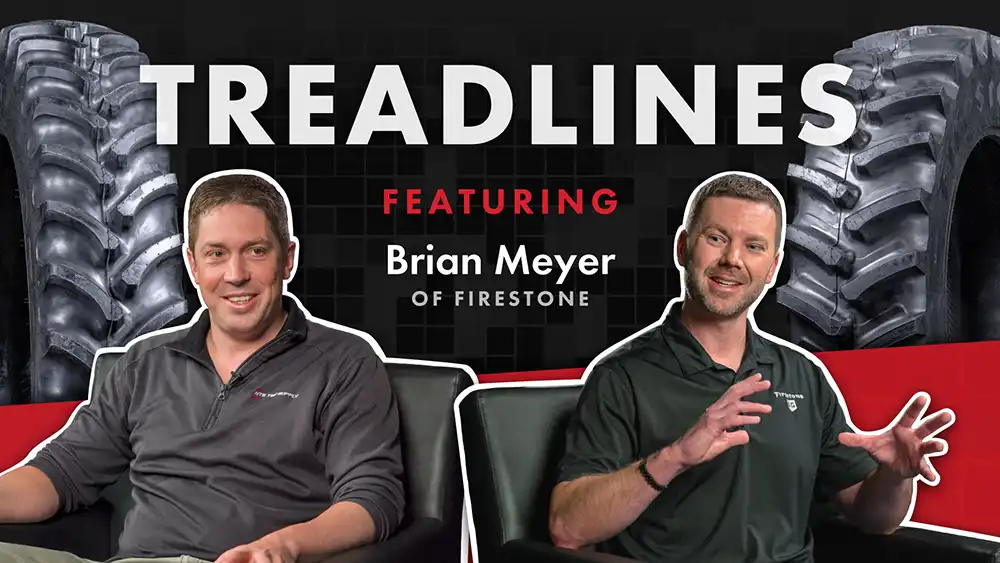Traction problems with your big 4WD can cost you BIG in wasted time and money. Higher fuel bills. More time spent in the field. And lost yields due to increased compaction and rutting. Even if buying a new, larger tractor were a possibility, more power isn’t always the answer. Power is great, but you need the correct tire setup to put all that power to the ground effectively.

Make Your 4WD’s Tires Work for Your Bottom Line
Tires are your tractor’s only link to the ground. At NTS Tire Supply, we've been changing the way farmers think about tires. With the Right Tire System, we make sure your tractor's tires are the right size, set at the right pressure, and overall right for the job. Even if you have the largest, most powerful 4WD on the market today, these 5 strategies can return more dollars and more time to your operation through increased efficiency.
1. Please Use a Tire Pressure Gauge!
Do you know how much air is in your tires? It’s a simple question, but from our experience, there’s plenty of farmers who don’t know their tire pressures. Or, they know how much air is in their tires, but don’t know why. First, a tire pressure gauge should be one of your frequently used shop tools. Next, you need to figure out exactly how much pressure you need in your tires for the job at hand. (Hint: it’s probably not the number printed on the tire’s sidewall.)


Overinflation Crushes Traction Performance
High tire pressure is a common culprit of traction problems in the field. Overinflation shrinks your tires’ footprint size, which means that your tires will have fewer lugs in contact with the soil. And fewer lugs gripping means more spinning. Plus, smaller footprints transfer your tractor’s weight onto a smaller area, which means you’ll sink deeper into the soil and burn more fuel just to climb out of your own ruts. Overinflation is also the leading cause of power hop.
Learn More: How to Fix Power Hop and Start Being More Productive.
How to Find the Proper Inflation Pressure
To determine the proper inflation pressure for your tires, you need to know the axle load, speed of operation, and number of tires (singles, duals, triples) per axle. Here are a few key points to keep in mind as you’re determining the right air pressure:
- A tire’s load carrying capacity decreases as speed increases. For example, a tire traveling at 25 mph may need to be inflated to 15 PSI while that same tire traveling at 6 mph may only need to be inflated to 7 PSI.
- Always use the recommended inflation pressure given by the tire manufacturer. So, if your tractor is wearing Firestones, make sure to consult Firestone’s tire load and inflation table or its online tire inflation calculator.
- As your tractor’s tire setup changes (adding/removing triples, etc.) with the seasons, you need to adjust your tire pressures to match.
- Check your pressures daily to be sure they’re on target. If the weather turns colder, your tires will lose some air, and it’s not good to be underinflated either.
Find Your PSI: Links to manufacturer online tire pressure calculators.
If you have questions about determining the correct tire inflation pressures for your equipment, contact NTS Tire Supply.
2. Fine-Tune Your Ballast
For a 4WD tractor, your target weight is generally 95–110 pounds of ballast per engine horsepower for ag operations. For example, if you have a 500 hp 4WD tractor, you’ll want its weight to be between 47,500 and 60,000 pounds.

Aim for Wheel Slip Between 8% & 12%
Just about every modern tractor includes wheel slip among the data you can view from the cab. If your wheel slip is above 12%, you probably need more ballast. It’s best to use iron weights when possible. Liquid tire ballasts can reduce the tire’s sidewall flex which prevents the tire from developing a full footprint. (And if you need to dismount duals or triples, wrangling liquid-filled tires can be dangerous.) If liquid tire ballast is your only choice, we recommend Bio-Ballast—a safe, non-corrosive alternative to calcium chloride.
If your wheel slip remains below 5%, you may want to remove some ballast from your tractor. Excessive weight increases the tractor’s rolling resistance and increases the severity of soil compaction.
If you don’t have a slip percent readout on your tractor’s monitor, one easy way to estimate wheel slippage is to look at your tractor’s tracks in the soil. Tracks with no defined lug imprints indicate too much slip. On the other hand, tracks with very defined lug imprints—with no soil disturbance in-between the lugs—show that your tractor is too heavy and/or experiencing too little slip. Why doesn’t low slip increase your efficiency? Because, your tractor is likely too heavy and you’re once again burning extra fuel to climb out of your ruts all day. Ideally, you want to see lug imprints with some soil disturbance between them.

Learn More: How to optimize your tractor's wheel slip.
Find the Optimum Weight Distribution
Your 4WD’s front-to-rear weight ratio should be between 55:45 and 60:40 respectively. This ratio will vary based on the downforce the implement exerts on the tractor’s rear axle. To continue our example of a 500 hp 4WD tractor at 60,000 pounds, this tractor should weigh around 33,000 pounds on the front axle and 27,000 pounds on the rear axle.
3. Replace Worn Tires
You’ve spent countless hours doing field work, so trust the feel of your tractor: If it seems to be slipping more than normal, and your tire tread is worn to some degree, it’s definitely time to replace them. Other factors may point to new tires in your future too, such as tires with excessive stubble damage, odd wear patterns, or a slow leak. (You’re checking your tire pressure often with a tire pressure gauge right?)
4. Choose the Best Tires for the Job
Get More Grip with IF/VF Radials
If you want to increase traction without a massive weight increase, you need to put more lugs on the ground. This is why IF (increased flexion) and VF (very increased flexion) technology is vital. Advanced sidewall engineering allows VF/IF radials to flex more than a standard tire*.
- Increased sidewall flex = a longer tire footprint.
- A longer tire footprint = more lugs on the ground.
- More lugs on the ground = more pulling power with each engine revolution.

It’s a simple formula, but one that is sure to save you time and fuel in the field. For example, an internal company test at Michelin found that its AXIOBIB 2 VF tire provided a 28%–35% increase in traction and a 7%–11% time savings over its older MACHXBIB (non-VF) model.
*VF tires can carry the same load as a standard radial tire at 40 percent less pressure. IF tires can carry the same load as a standard radial at 20 percent less inflation pressure.
Get More Grip with High-Tech Lugs
For top-end IF/VF radials, tire companies also put more thought into the lug design. Smarter lug design accomplishes three goals:
- Provides a bigger “bite” into the ground without excessive compaction.
- Delivers increased stability for less traction lost to vibrations and lug bending.
- Encourages longer wear and better durability with heavy roading.
Take Trelleborg’s “tread wings” on its TM1000s for example. This lug design creates a wider footprint under load (in addition to the tire’s longer IF footprint when compared to a standard radial). During company testing, researchers found that the TM1000 can put 28% more power to the ground than its budget competitors. The company estimated a time savings of 21 hours compared to the average times of the competition on plowing 1,200 acres.

Learn More: The top 10 tires to maximize traction.
Choose the Right Tread Design for Your Fields
Firestone is known for its 23 degree tread bar design, which it uses on many of its radial tire models. (Some Firestones, such as the Maxi Traction, use a dual-angle bar design.) Does the 23-degree tread bar really outpull the competitions’ 45-degree bar? It depends on the application, soil type, and field geography.
Yes, the 23-degree tread bar does put more lugs on the ground due to its flatter angle, but 45-degree tread tends to have better cleanout properties and offer better performance with less side-slipping on hilly terrain or in wet fields. The 23-degree tread bar offers better traction on firm, dry (or moderately dry) ground.
Learn More: 23° vs. 45° lug angle: a guide for choosing the right tread design.
5. Maximize Your Tire Investment with a Central Tire Inflation System
Here's a problem to think about: your 4WD’s tires have to perform both in the field and on the road. A tire that can safely run in the field at 7 psi may need 20 psi to be safe for roading. What do you do? Compromise between the two pressures? Now you’re losing traction in the field and wearing your tires faster on the road.
And when you simply set tire pressure for the worst case scenario—running down the road with a heavy load—you’re leaving a lot of money on the table because your tires will perform poorly in the field. According to Michelin, the owner of PTG Tire Inflation Systems, a central tire inflation system can deliver:

Learn More: Get more grip in the field, less tire wear on the road & better efficiency with a CTIS.
It doesn’t matter what tire brand your tractor wears, an inflation system can inflate your yields by limiting compaction, increasing traction, and bringing more efficiency to your field operations.
What Are My Best Options to Get More Traction?
If you’re serious about getting more traction from your 4WD tractor, following one (or more) of the above recommendations can make a substantial impact on its traction performance, fuel economy, and overall productivity. If you follow one piece of advice, and one only—use your tire pressure gauge often! Know how much air is in your tires and why your tires are set to that pressure. A second piece of advice? Check out the Right Tire System and learn why the right tires and wheels are crucial when you want to boost your farm's productivity.
Need help figuring out the ideal PSI for your tires or want to upgrade to VF radials? Give NTS Tire Supply a call and talk with one of our tire experts. We’re here to Drive Your Farm Forward.

.png)
.jpg)



















